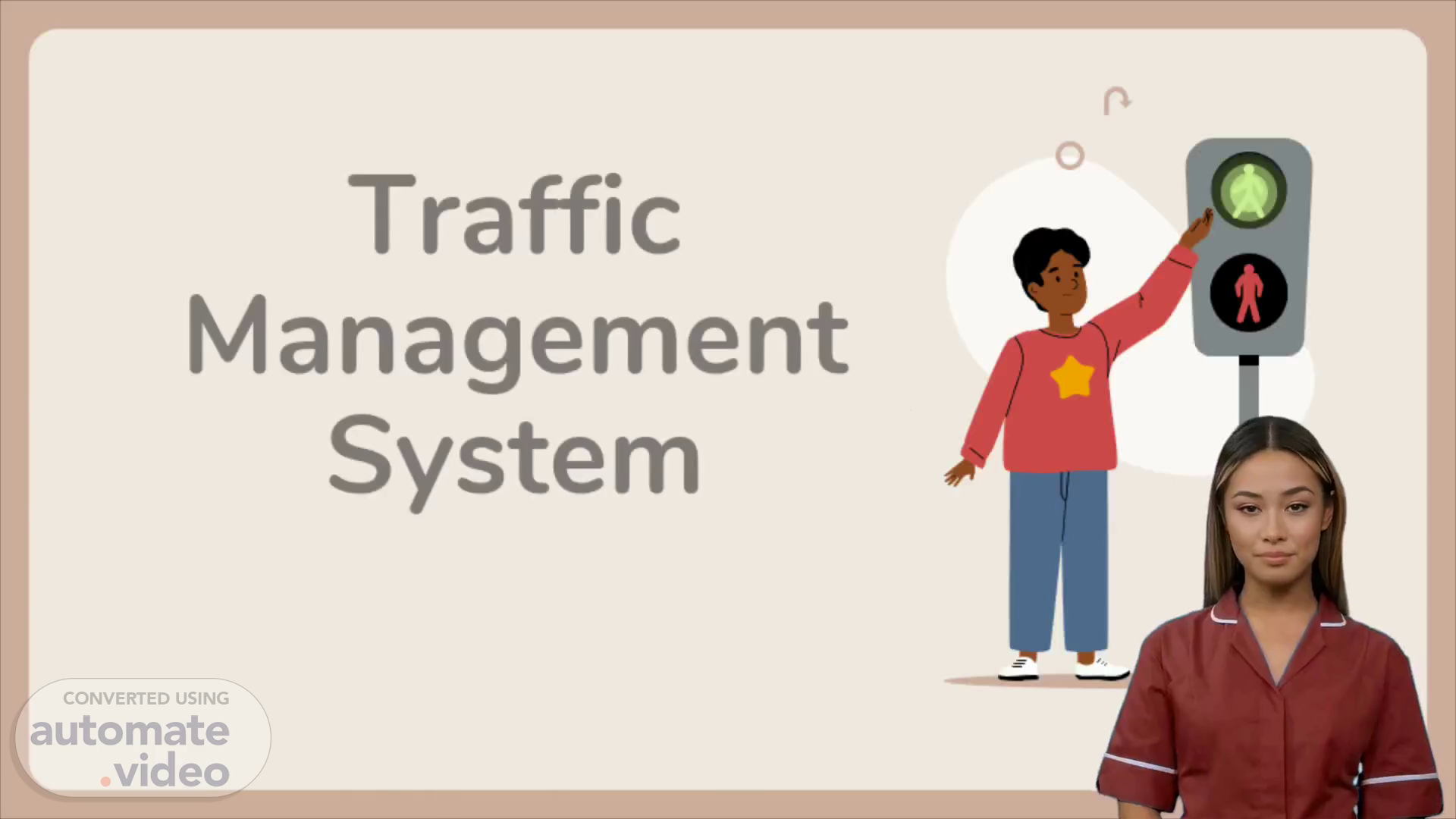
Page 1 (0s)
[Virtual Presenter] Good morning everyone. Today we are presenting our Traffic Management System, which was designed and developed by Saanvi, Vaishnavi and Thanvi 10B. We will be exploring how it works to optimize traffic flow, reduce congestion, prioritize emergency vehicles, and promote environmental awareness and sustainability. We will be demonstrating how the components such as Arduino Mega, RFID communication, LED light and other components are used to analyze traffic data and adjust the traffic light system accordingly. We hope you find this presentation interesting and informative and we appreciate your time..
Page 2 (44s)
[Audio] The average Bangalore resident wastes an incredible 260 hours -over 11 days- a year stuck in traffic jams. Additionally, traffic congestion is estimated to cost India's biggest cities $22 billion, placing India in the top 10 countries for money lost to traffic congestion..
Page 3 (1m 5s)
[Audio] The proposed Traffic Management System seeks to maximize traffic flow and minimize congestion through leveraging STEM applications for optimized solutions. Utilizing RFID communication technology, emergency vehicles such as ambulances can also be prioritized for better and quicker service. In addition, the system will promote environmental awareness and sustainability..
Page 4 (1m 31s)
[Audio] The Traffic Management System consists of the Arduino Mega 2560 at its core, responsible for making and monitoring decisions. The Arduino Nano and the HC SR04 Ultrasonic Sensor detect obstacles in the way. The RFID RC522 module and RFID Tags are necessary for identifying any vehicles entering or exiting the area. The Solderless Breadboard, 220 Ohm Resistors, Signal Light Module, PCB and 12V DC Power Supply, along with connecting wires, make the system complete..
Page 5 (2m 12s)
[Audio] Using an HC-SR04 Ultrasonic Sensor to detect the presence of vehicles, the data is then transmitted to an Arduino Mega 2560 board. The Arduino then interprets this data and sends signals to the connected LEDs, enabling them to function as traffic lights. Depending on the signals given by the sensor output, a green light will be illuminated to allow traffic to pass through a particular path. The delay time for activating the next light is then set, providing an efficient traffic management system to make roads and highways safer for everyone..
Page 6 (2m 51s)
[Audio] Drawing upon the principles of science, technology, engineering, and mathematics, the Traffic Management System seeks to provide efficient traffic flow. Its core involves understanding traffic flow theory and collecting data from sensors to identify patterns and trends. Engineering then provides the basis for designing and optimizing traffic signal timings as well as control systems. Finally, mathematical models are used to simulate and analyze these systems, enabling traffic flow optimization. This STEM-focused approach is key to achieving greater efficiency..
Page 7 (3m 32s)
[Audio] Using RFID technology, the Traffic Management System facilitates the navigation of emergency vehicles such as ambulances in an efficient manner. It can detect the presence of an ambulance and automatically change the traffic lights to green, allowing for safe and convenient passage. The user receives confirmation of this change through a mobile app and afterwards, the traffic lights return to their original signalling. This system is effective in not only saving time during emergency periods, but also providing an increased level of safety and efficiency in the navigation of emergency vehicles..
Page 8 (4m 12s)
[Audio] RFID technology is used to implement an intelligent traffic signal control system. Tags are placed on ambulances, communicating with an RFID reader installed at the traffic signal. An Arduino Nano is used to receive the data from the RFID reader and to apply programmed logic in decision-making. This enables the ambulance to move through the junction without delay and with priority..
Page 9 (4m 40s)
[Audio] Proposed model of traffic management is groundbreaking in its application and scope, combining IoT (Internet of Things), RFID technology, and AI to monitor traffic in real-time, adjust signal timings dynamically, and give priority to emergency vehicles. These advancements can effectively reduce congestion, optimize traffic flow, and decrease air and noise pollution. In summary, our traffic management system offers good potential to help India meet the Sustainable Development Goals 3, 11, and 13..
Page 10 (5m 17s)
THANK YOU!!.